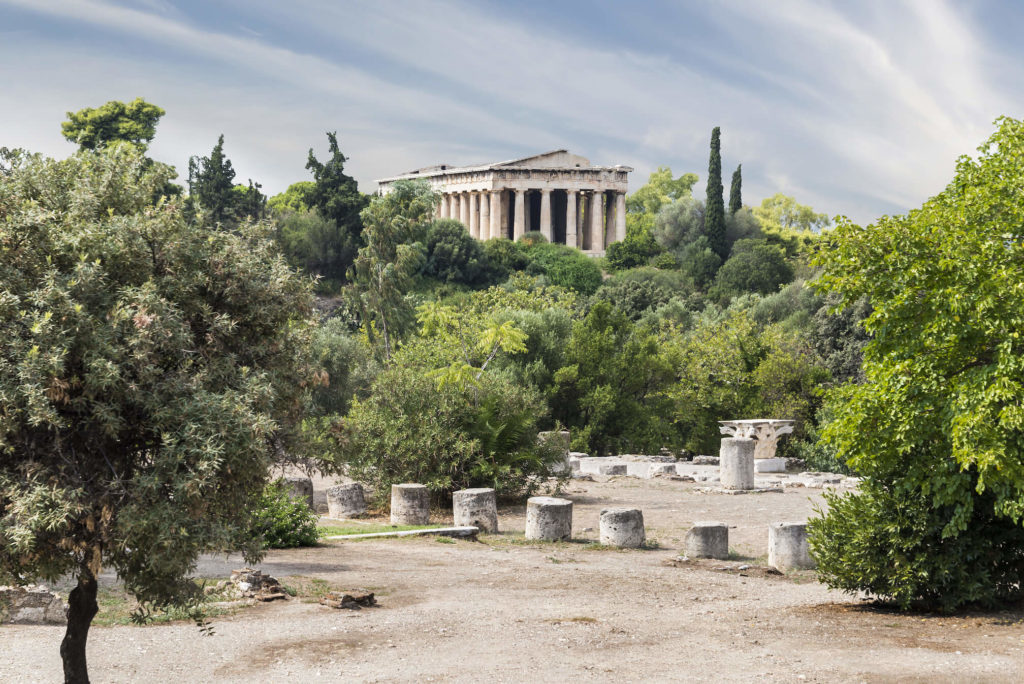Hans Christian Andersen visited Athens in late March 1841. The famous Danish fairy-tale writer walked up the Acropolis on a daily basis; he enjoyed the superb view and considered the place “a ruined fairy world”. There were wild cucumbers growing over the steps of the Parthenon, while unburied Turkish and Greek skulls were scattered about, a vivid vestige of the recent war of independence. There were Venetian bombs and lots of shuttered pieces of marble and ancient statues. And in the very center of the Parthenon Andersen was able to inspect an unlikely remnant of the city’s Ottoman past; a mosque.
A sultan in Athens
The Ottomans captured the Acropolis in 1458. Sultan Mehmed II was there to witness the capitulation of the last Duke of Athens. According to tradition, Mehmed greatly admired the city’s classical past and issued an imperial edict to protect its remnants. The destruction or looting of classical monuments would be punished by death. The Parthenon, which had served as the Church of the Virgin Mary for almost eight centuries, was converted into a mosque.
The Parthenon becomes a mosque
The exact date of the conversion is unknown (in 1466 the Parthenon was still a church) but the process was easy enough. The apse became a mihrab to indicate the direction of the Kaaba in Mecca, while a minbar was added to allow the imam to deliver his sermons. The paintings on the walls were whitewashed and the iconostasis was removed. The most obvious change concerned the exterior; the old tower at the southwest corner of the cella [i.e. the right corner of the temple as one sees it from the Propylaea] that served as a bell tower (or a watchtower) was extended upwards and became a minaret.
The Parthenon marbles
In the mid-seventeenth century, the Ottoman traveler Evliya Çelebi visited Athens and wondered at the marvelous Parthenon mosque. As far as Çelebi was concerned, this building could not have been the work of a human agency. The four columns of red marble that supported the baldachin shone so brightly that he could see his reflection on them. There were also four columns of emerald green carved with amazing flowers near the minbar. The white marble blocks of the floor and the walls were massive (some as big as an elephant according to the astonished traveler) and so closely fitted that you couldn’t detect the joins. The whole building seemed translucent, as light filtered through the marble walls at the east end. The Ottoman visitor was also very much impressed by the sculptures whose subject he determined to be “all the creatures fashioned by the Creator of the Universe, from Adam to the Second Coming”.
The Christian past
The Christian past of the mosque was also readily observable. The coating of whitewash applied on the walls was not particularly thick. Çelebi was able to discern an exciting painting of the Last Judgment in the porch, with the gardens of Paradise on one side (where much merry drinking and dancing was taking place near the Throne of God and the bridge of a hair’s breadth) and Hell on the other (full of demons, dragons, one-eyed monsters, crocodiles, elephants, rhinoceroses, and satans). But the most spectacular evidence of the Christian Parthenon was the gold and colored glass mosaic of the Holy Virgin that covered the apse. A Turk once took a potshot at it, but his arm soon shriveled, a punishment that convinced the other Turks to leave the mosaic intact (or so the story goes).
Plato and the Parthenon
Outside the mosque, Evliya noticed a cistern big enough to accommodate five men. He claims that during the temple’s construction, the architect filled it with wine to serve the needs of the workers. He is adamant that the great throne in the apse was used by Plato to teach the people of Athens. Çelebi also attributed those marvelous translucent panels in the east wall to the philosopher’s ingenuity.
An explosive end
The mosque that Çelebi described as one of the finest in the world was completely shattered in September 1687, when a Venetian mortar round penetrated the roof of the Parthenon and ignited the gunpowder stored inside. The destruction was complete. The marvelous columns and the mysterious wall paintings and the miraculous mosaic of the Virgin collapsed in a heap of rubble and broken pieces of marble. Colored glass tesserae were scattered all over the place, among the bodies of hundreds of Ottomans who perished in the catastrophic explosion.
The second mosque
In the 18th century, the Ottomans built a new mosque in the center of the cella to replace the one lost in the great explosion. This edifice could not even remotely compare in size or splendor to its predecessor. Andersen described it simply as a “whitewashed, quadrangular building with a dome”. The only visible connection to the past was the still-standing minaret.
When Greece gained its independence from the Ottoman Empire in 1832, the section of the minaret that protruded from the architrave was demolished. The mosque served as storage for artifacts discovered on the Acropolis. According to Andersen “in the altar there now stood a torso of an Apollo statue”.
A section of the walls collapsed in 1842 and soon after the whole building was removed. Today only the base of the minaret and the lower section of the spiral staircase remain in situ. A keen observer can still see its wall (punctuated by the small openings that served as windows) among the columns in the southwest corner of the Parthenon.

Hans Christian Andersen in Athens – Mentor in Greece
The famous fairy tale writer Hans Christian Andersen visited Athens in the spring of 1841 and recorded his impressions of the Greek capital and its people. Follow in the footsteps of the prolific Danish author and uncover a city that doesn’t have snow queens or little mermaids but it sure abounds in incredible true stories.
mentoringreece.com















